Kazimierz Nowak is one of the most interesting Polish travelers, although he is still relatively little known. Novak made an incredible, even today, bicycle trip to Africa. He was a very keen observer and left hundreds of letters and many accounts. He treated the people he met on the way with great kindness and compassion, thanks to which he was liked even by African chiefs.
Kazimierz Nowak – who was he?
Kazimierz Nowak was born on January 11, 1897 in Stryj (today in Ukraine). After the First World War and the restoration of Polish independence, his family moved to Poznań. There, Novak got a job as an office worker and journalist in one of the newspapers.
Kazimierz has been interested in traveling since childhood. When he was a teenager, he traveled on his own to Italy, where he visited, among others, the Vatican. He organized many bicycle trips around the country, which he documented with photographs.
On March 19, 1922, Kazimierz Nowak married Maria Gorczyk. The couple had a daughter Elizabeth and a son Romuald. Maria remained Casimierz's great love until the end of her life. It was to him that the traveler wrote many letters from his travels. Reading this correspondence, you can see how strong the bonds between the spouses were.
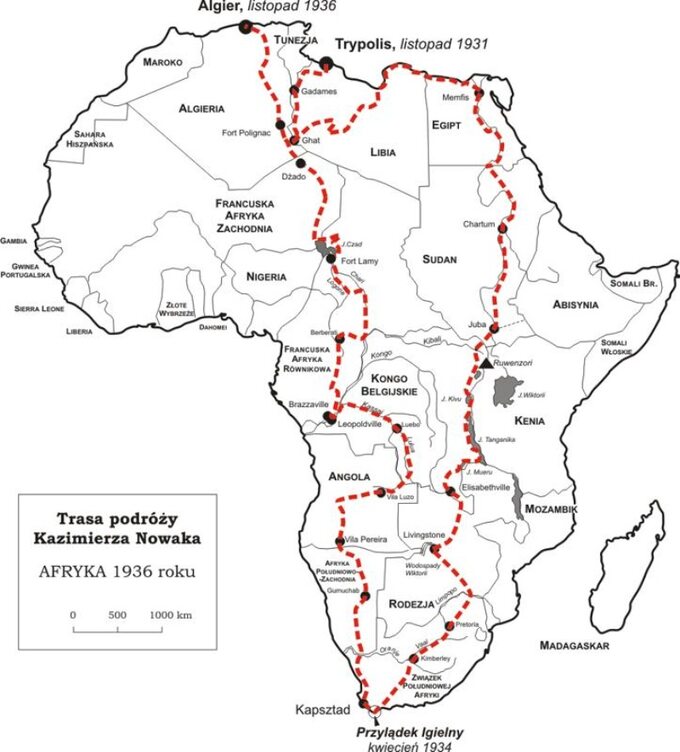
In the second half of the 1920s, Kazimierz Novak lost his job. Then he decided to leave the country to work abroad for his family. He became a correspondent and photographer. He worked in many European countries, reaching many places by bicycle. With this vehicle he traveled to, among others, Hungary, Austria, Italy, Belgium, the Netherlands, Romania, Greece and Turkey. In 1927 Novak reached Tripolitania (now Libya; then an Italian colony). It was his first encounter with Africa. This continent fascinated him – that's when he decided to one day travel to Africa from north to south.
In 1927 Novak returned to Poland. However, he still planned to return to Africa again soon. Few believed that Novak would fulfill his intention. The idea of cycling across Africa, from Cairo to Cape Town, seems a little crazy today.
through Africa
However, Kazimierz Novak finally achieved his goal. The expedition to Africa was to be an opportunity to write many reports and letters, as well as to take photographs that would later be published in European newspapers. On November 4, 1931, Kazimierz Nowak left Borusin for Poznań, and from there took a train to Rome.
In the capital of Italy, Novak changed to a bicycle and went to Naples, and from there he reached Tripoli by boat on the Mediterranean Sea on November 26. Thus began the great adventure of Kazimierz Nowak.
Tripoli and Cyreneica were in turmoil at that time. The Italian authorities were extremely surprised (and concerned) to see a lone Polish man traveling by bicycle in the desert country, so they ordered him to leave their colony. So Kazimierz Nowak went to Alexandria (Egypt was then in the sphere of influence of Great Britain) and from there finally south along the Nile and along the route of the Great African Lakes.
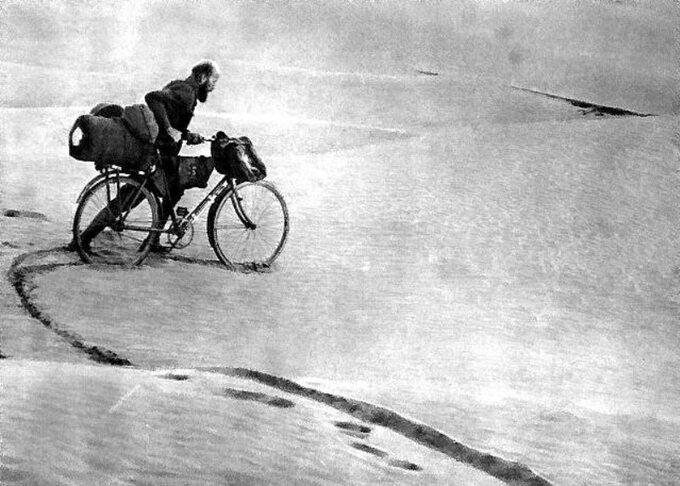
Novak was generally welcomed by all the tribes he met along the way. Everyone was surprised by the white man who crossed the desert and then the jungle on a strange “car”. However, Novak is able to win the favor of the natives – he did not come to the Africans as a colonizer, but as a person who himself needs help. He received this help and at the same time was able to observe the daily life of peoples about whom almost no one knew at the time.
During the trip, Kazimierz Nowak continued his observations. He also wrote many articles, which, whenever possible, he sent from the European missions scattered over the continent. These texts were most often sent to his wife, who in turn sent them to publishers and the press. Thanks to the money obtained in this way, Novak's family had a means of livelihood.
Kazimierz Novak observed the reality around him extremely carefully. He wrote about the beauty of Africa and the difficulties he encountered along the way. He described the daily lives of Africans and the poverty they faced. He saw the inhuman face of colonialism. He got along very well with the missionaries he met along the way and avoided all colonial officials and military officials with whom he did not feel sympathy. At the time, he could be extremely critical, which not everyone liked. The Polish Naval and Colonial League, informed of Nowak's expedition, was disappointed by his skeptical view of European actions in Africa. Perhaps that's why Novak received almost no material support from the league, and along the way he had to fend for himself and rely on the help of others.
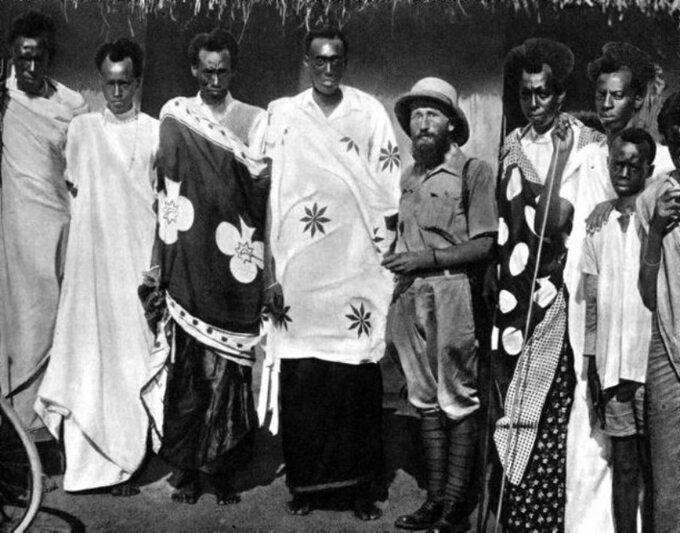
Kazimierz Novak had the biggest support from his wife. He was the intermediary between him and the publishers. She also tried to send her husband's packages by mail to the specified addresses (Novak planned his trip very carefully, so he could write to his wife in advance that he would be in a certain city on certain days). Novak found a 35mm Contax camera in one of his wife's packages. Thanks to him, he took more than 10,000 photos during the trip.
On April 30, 1934, Kazimierz Nowak reached the top of Africa, Cape Agulius. The South African authorities were so shocked by Novak's actions that they offered to send him back to Europe first class on a luxury ship. However, Novak refused, deciding to travel as before, only changing the route so that he could visit other places.
– I was overcome by fear… – he recalled later – when I thought that I could be in the four polished walls of the salon, I started to remember the tones of the restaurant's jazz band, the silhouettes of elegant men and women were visible. My eyes, I got on my bike and ran.
…and back
Kazimierz Nowak's worn-out bike finally fell apart due to age. Then the traveler decided to buy two horses. He bought them from a Pole living in Gumuchab (Namibia). Novak traveled the next 3,000 kilometers on horseback through Namibia and Angola. In Angola, he visited Count Zamoyski, who gave him his own bicycle. Thanks to this help, Novak continued his journey by bicycle and left Zamoysk with his horses.
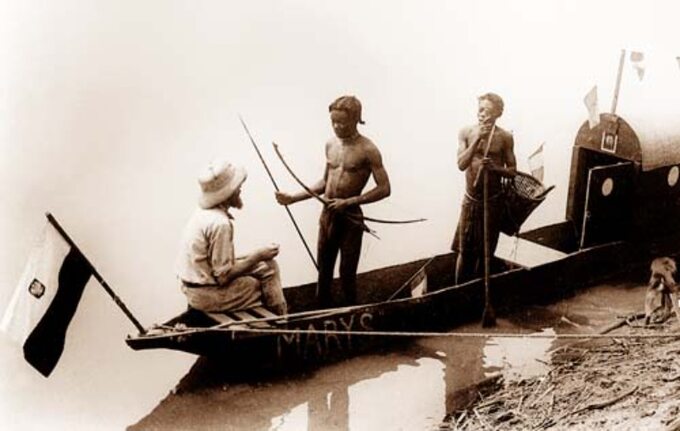
On the way, Novak also used other vehicles. He crossed the Kasai River in a canoe specially made for him, which he called “Poznan I”. However, he could not withstand the strong current of the river. Novak walked the next few hundred kilometers and reached Lulua, Congo (Democratic Republic of Congo). There Novak got another boat, which he named “Maryś”. Continuing along the rivers, in September 1935 he reached Leopoldville (Kinshasa). Kazimierz Nowak again cycled through the next stage of his journey. In this way he reached Lake Chad.
The French authorities in this area forbade Novak to move alone in the Sahara. Then the traveler decided to create his own caravan. For this purpose he abandoned his bicycle and bought a camel (dromedary). Kazimierz Nowak only traveled the last thousand kilometers, once again, by bicycle.
Kazimierz Nowak's great, epic journey ended in November 1936 in Algeria. From there he traveled by ferry to Marseilles, from where he traveled to Paris. Thanks to the help of the Polish consul, Novak received a loan of 750 francs. With this money he could buy a train ticket to Poland.
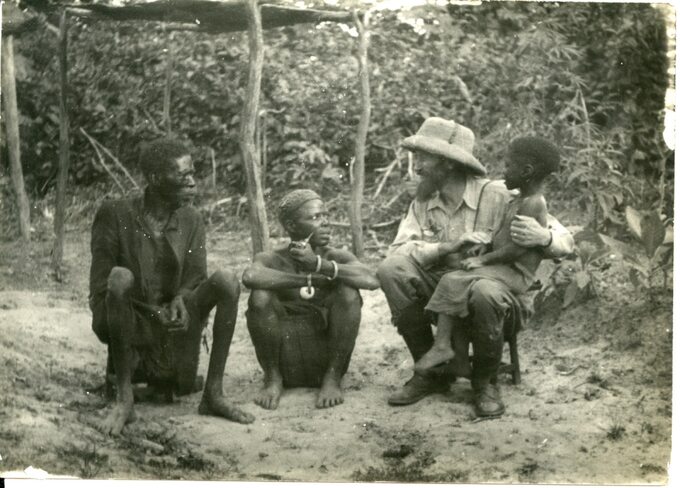
Kazimierz Nowak returned home on December 23, 1936 after a five-year journey. After his return, he gave many lectures on ethnography and also presented his photographs. Nowak was also invited to universities: he gave lectures, including at the Jagiellonian University and the Higher Commercial School in Warsaw.
Kazimierz Nowak was not going to rest on his laurels. Soon after his return, he was already planning another trip – to India and Southeast Asia. However, he could not implement these plans. Diseases afflicting Africa, including several cases of malaria, have made themselves felt. Casimir also suffered from periostitis and later pneumonia. Kazimierz Nowak died on October 13, 1937, when he was only 40 years old. He was buried in the cemetery of Our Lady of Poznań in Gorczyn.
Kazimierz Nowak is a unique figure in Polish and world history. He embarked on a journey that most, even the most famous travelers, would never undertake. He left an extremely rich legacy: thousands of photos, letters and reports. In recent years, Kazimierz Nowak's letters have been collected and published in four subsequent volumes of the series.
Also read:
Unknown Pilsudski. The forgotten brother of Joseph is a hero of JapanAlso read:
giant mountains. The first hikes in the Karkonos MountainsAlso read:
Krzysztof Archyszewski. The long career of a Polish mercenary
(tags translate)kazimierz nowak
